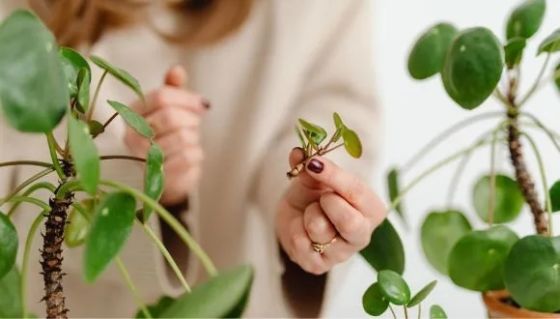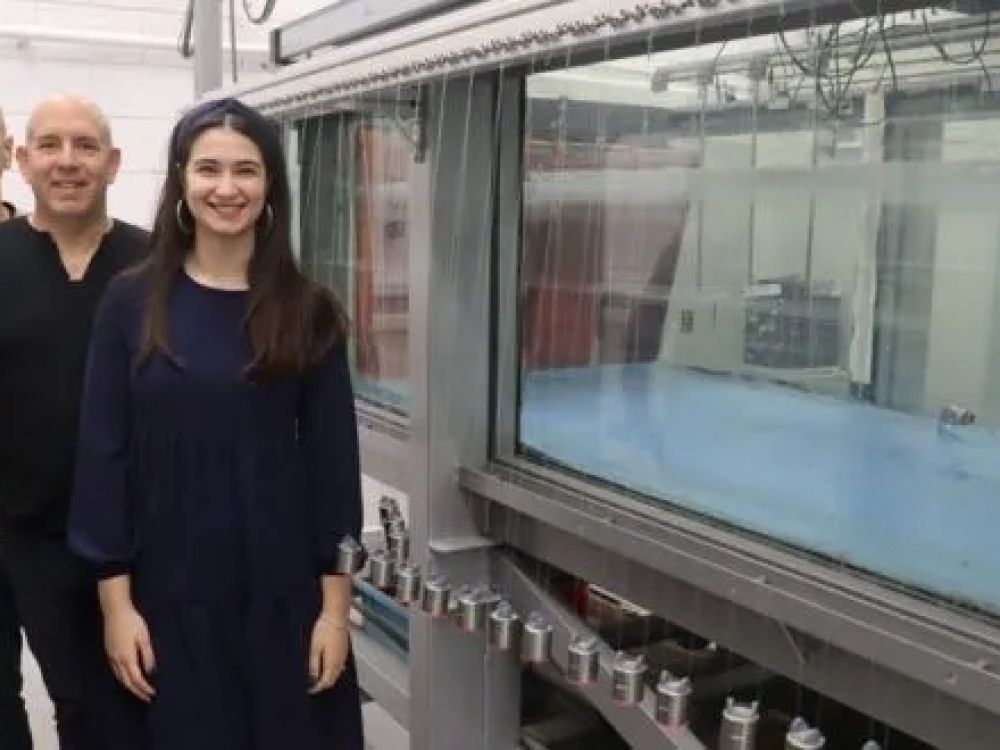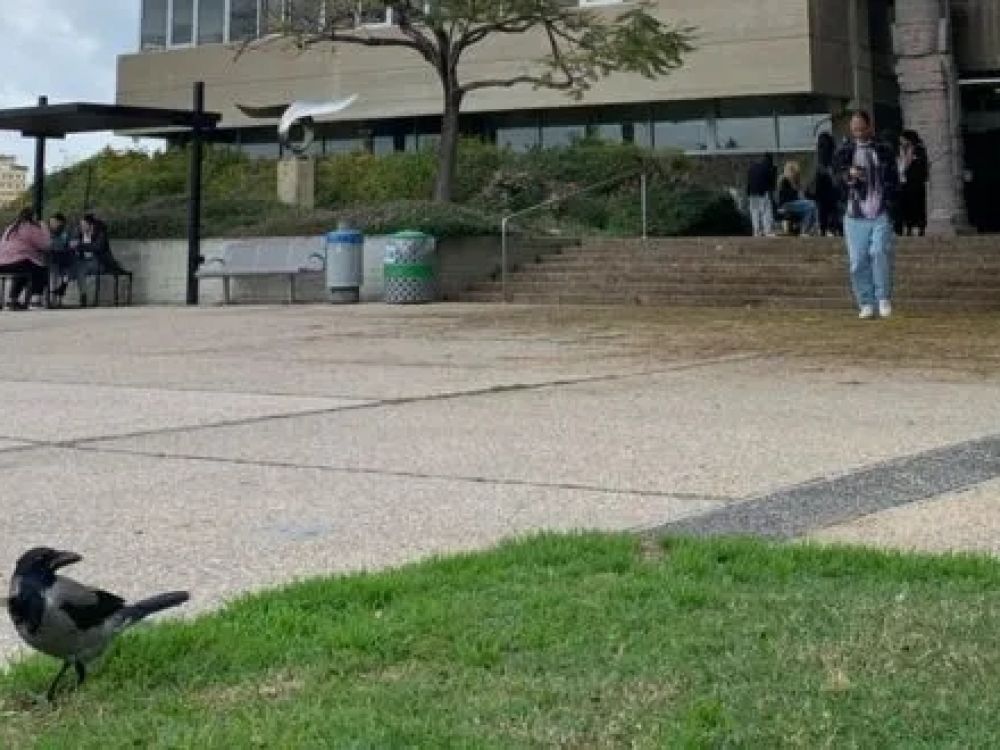In an extensive and multi-phased international study that lasted for eight years, led by researchers from the School of Plant Sciences and Food Security at TAU and the Volcani Institute, there were new compounds developed that significantly increased the rooting efficiency of cuttings (typically small branches) taken from mature trees. The researchers explain that getting cuttings to root is a critical component in modern agriculture: “A significant number of fruit trees, as well as forest trees and ornamental plants, are today based on cutting propagation: the creation of plants that are genetic clones of an individual with desirable characteristics. Improving the rooting process can contribute to global agriculture in various aspects: developing new, high-quality varieties, lowering prices for farmers and consumers, increasing the economic viability of new cultivars of crops, and adapting crops to the changing climate conditions”.
Enhancing Nature
The research was led by Dr. Roy Weinstain, research student Ohad Roth from the School of Plant Sciences and Food Security at TAU and Dr. Einat Sadot from the Institute of Plant Sciences at the Volcani Institute. Also participating in the research were Dr. Inna Vints from the TAU School of Plant Sciences and Food Security, Prof. Nir Ben-Tal and Dr. Amit Kessel from the Department of Biochemistry and Molecular Biology at TAU, Sela Yechezkel, Ori Serero, Avi Eliyahu, Pan Tzeela, Dr. Vikas Dwivedi, Dr. Mira Carmeli-Weissberg, Felix Shaya, and Dr. Adi Faigenboim-Doron from the Volcani Institute and Prof. Joseph Riov from the Faculty of Agriculture of the Hebrew University of Jerusalem. The study was in collaboration with researchers from the USA, Germany, Denmark and England and published in the prestigious journal Nature Biotechnology.

Left to right: Dr. Einat Sadot, Dr. Roy Weinstain, Ohad Roth & Sela Yechezkel. Photo credit: The Volcani Institute.
Dr. Sadot explains: “vegetative propagation through cuttings is a method used to propagate plants asexually – not through seeds. In this method, a branch is selected from a plant with desirable properties (e.g. fruit taste, drought resistance, disease resistance, etc.), and parts of that branch, called cuttings or propagules, are exposed to conditions that cause them to grow roots and become independent plants. The new individuals created this way were actually clones with the same genetics as the mother plant. For a crop to be economically viable, rooting percentages of at least 50-60% are necessary, and this figure is a significant consideration for farmers. Rooting percentages vary between different genuses of the same family, between different species of the same genus, and even between different cultivars of the same species, and there are important agricultural plants that are particularly difficult to root”.
Cutting-Edge, Literally
To improve the percentage of plants developing roots, it is necessary to expose cuttings to the plant hormone auxin – a procedure that was discovered more than 70 years ago and has hardly changed since. Dr. Weinstain: “The effectiveness of the existing auxin treatment varies from plant to plant. Numerous agriculturally important plants hardly respond to the standard auxin treatment in terms of root formation that couldn’t be commercialized. In our study, we sought to increase the effect of auxin on the cuttings. Evidence in the scientific literature and observations by experts in the field led us to address the question: will a slow release of the auxin in the plant increase the rooting success of the cuttings?” To do this, the researchers first created a ‘library’ of materials based on synthetic auxin conjugates – molecules in which a synthetic auxin attaches to another chemical group that neutralizes its activity but can be released slowly in plant cells. The library was examined using cuttings from a mature Eucalyptus grandis tree, in which the standard auxin treatment reached low rooting percentages of only 10-15%.
Research student Ohad Roth explains: “The initial examination identified several compounds that have a positive effect on the rooting process, and further research focused on the most effective one. We discovered that this compound enables a combination of high permeability to the plant with a prolonged release of the active substance, the synthetic auxin, so that the auxin stays in the plant much longer, up to a week and a half”. Indeed, the upgraded treatment increased the rooting percentage of the Eucalyptus grandis cuttings to 60% – up to 6 times higher than the rooting percentages found using the standard method.
Later, to more deeply understand the new compound’s mode of action, the researchers used the model plant Arabidopsis thaliana. They discovered that the synthetic auxin used in the new material is more stable (breaks down more slowly) in the plant cells compared to the auxin used in the standard treatment. In addition, the researchers identified a family of enzymes in the plant that are responsible for the release of the synthetic auxin. By modeling these enzymes’ structure and biochemical properties, they have identified important characteristics of their activity.
In the next step, the researchers wanted to see if similar enzymes are also present in other plants – assumingly their presence will allow the new material to be used as well as in other crops. They discovered that this family of enzymes is very ancient and preserved throughout evolution in every tree tested. In light of the encouraging findings, they began to test the effectiveness of the materials they developed on various crops.
Transforming Argan Trees to Agricultural Crops
One of the most meaningful crops examined in the study is the argan – the Moroccan oil tree. The researchers: “The global demand for argan oil is increasing by the years because of its incorporation to a large variety of food, health and skincare products. But to date, the almost exclusive source of this oil is the fruits of argan trees that grow endemically in Morocco and multiply by sexual reproduction, i.e. through seeds. All efforts to turn argan into an agricultural crop, which can be propagated by rooting cuttings, have failed – including attempts here in Israel. In our research, we took cuttings from several argan trees growing in Israel, exposed them to the material we developed, and, this way, succeeded in producing large seedlings from elite selections. In collaboration with the Kibbutzim of Ketura, Beit Kama, Hatzerim and Samar, we planted argan plots based on cuttings from individual specimens, which were rooted using the new rooting material, and we are now examining the possibility of turning them into an agricultural crop”.

Encouraging results were also observed in experiments with cuttings from apple trees rootstocks, poplar and other varieties of eucalyptus. Higher rooting percentages were achieved in all of them – twice as high or more when compared to the standard auxin treatment. The researchers conclude: “During the research, we developed a material that significantly improves the rooting percentages of cuttings from mature trees. The development could be significant for global agriculture in three aspects:
● Cost reduction: improving the efficacy of the rooting procedure may significantly reduce the cost of procuring seedlings for farmers and, ultimately, the agricultural produce for consumers.
● Improved produce quality: Thanks to the new method, more high-quality cultivars could developed and traded, negating the need to ‘compromise’ on lower-quality varieties simply because they have high rooting rates.
● Environmental compatibility: developing new crop cultivars that adapt to climate change conditions is imperative to sustain agricultural output. The new method can expedite this process and make it more efficient.
In follow-up studies, we plan to deepen the understanding of the new substances’ mechanisms of action and look for additional compounds, perhaps even more effective ones, that can be used as conjugates to slow down the release of auxin in the plant.”









